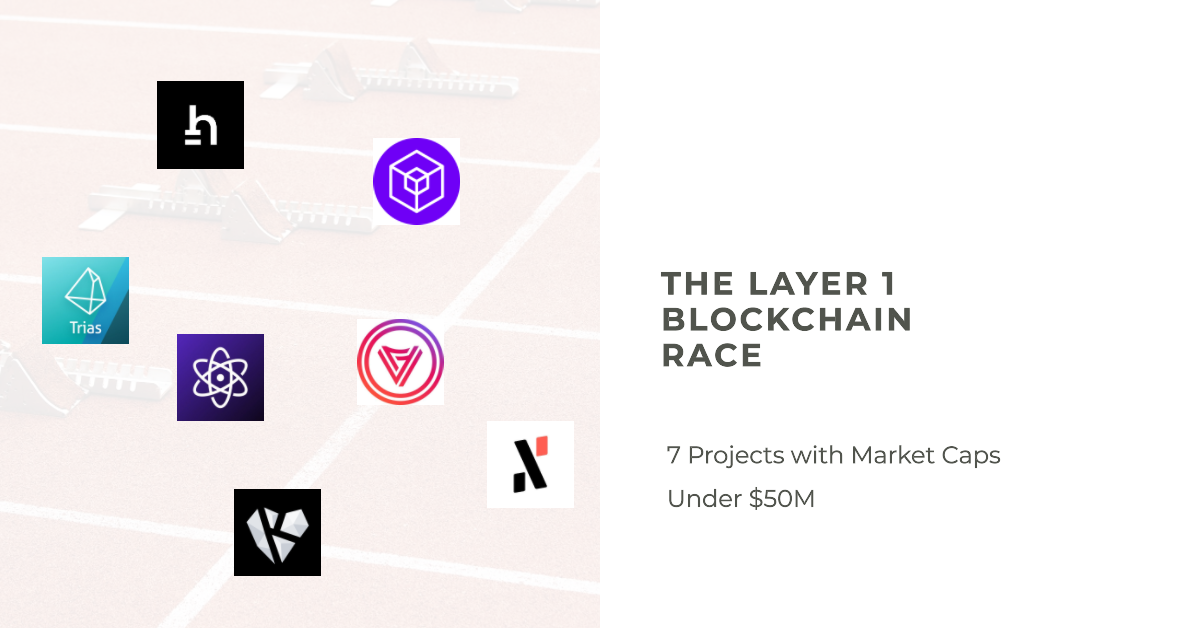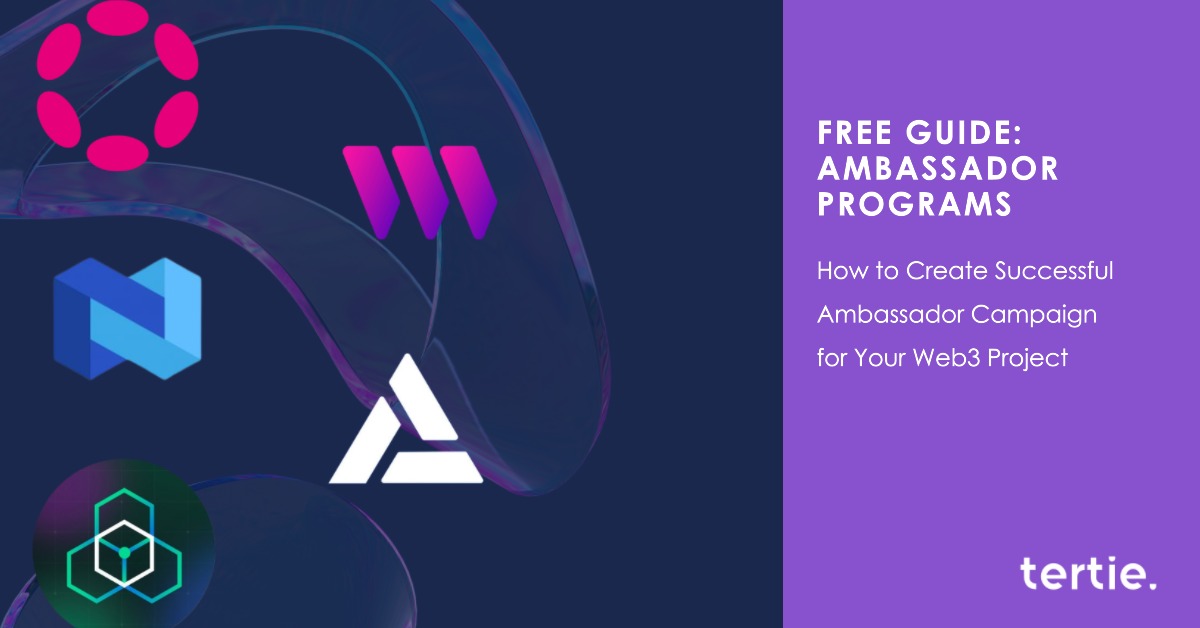Markets are trending lower each day. If May lived up to the old adage of “Sell in May and Go Away”, could June point to a period of accumulation? A possible, “Jump in June, Ride the Crypto Dune”? Who knows. What we do know is successful crypto projects continue to build and market irrespective of market conditions.
Layer 1 in crypto refers to the base protocol or underlying blockchain infrastructure upon which a crypto or decentralized network is built. This foundational layer is responsible for critical aspects of the network, such as consensus, transaction processing, etc. Layer 1 is the core blockchain layer that ensures the security, decentralization, and integrity of the network.
Here we look at seven Layer 1 projects, currently trading at a market capitalisation of less than $50 million. (Sources: Coingecko; CoinMarketCap; Coinranking; Cryptorank). There’s no order to this list.
1. Trias
Trias is a full-stack decentralized trusted cloud infrastructure and ecosystem designed to support all-scale, general-purpose, and enterprise-ready applications. Its goal is to address core trust issues by ensuring machines deterministically execute their intended tasks. The project is led by Dr. Anbang Ruan, a computer security expert with a Ph.D. from the University of Oxford, and a team with diverse academic and industry backgrounds.
The Trias architecture consists of three layers: Leviatom, Prometh, and MagCarta. Leviatom integrates Trusted Execution Environments (TEEs) and Heterogeneous Consensus Graph, acting as a foundational layer for other public chains like Ethereum and Hyperledger. Prometh combines formal verification and DevSecOps methodologies for traceable and verifiable software development. MagCarta is a consensus-oriented programming paradigm that enables the embedding of self-defined consensus strategies for enterprise DApps. Overall, Trias’s innovative architecture and strong team make it a promising solution for fueling industrial innovation globally.
Source for information: Whitepaper
Follow them on Twitter: @triaslab
Current Market Cap: $16.6M (Source: Coingecko)
2. Alephium
Alephium is a sharded L1 blockchain that combines decentralization, self-sovereignty, and security with high performance, accessibility, and energy efficiency. It’s optimized for DeFi and smart contract applications. Key features include its novel BlockFlow sharding algorithm, which enables up to 10,000 TPS, a stateful UTXO model for enhanced programmability and security, and Proof of Less Work (PoLW) for reduced energy consumption.
With a custom Virtual Machine called Alphred and its own programming language, Ralph, Alephium addresses critical issues in existing dApps platforms and simplifies the creation of decentralized finance applications. This unique combination of innovations positions Alephium as a powerful solution for scalable, reliable, and secure DeFi and dApps ecosystems.
Source for information: Project Wiki
Follow them on Twitter: @alephium
Current Market Cap: $6.3M (Source: Coingecko)
3. Kardiachain
KardiaChain is a decentralized public blockchain focused on interoperability and ease of use for developers. Its unique features include Dual Master Nodes technology, which enables seamless communication between KardiaChain and other blockchain platforms. This allows users to trigger events across multiple chains.
Key technological components of KardiaChain include:
- Dual Master Nodes: Decentralized, permissionless nodes that maintain ledger data for two chains simultaneously, ensuring security for both.
- BFT-DPoS Consensus Algorithm: Maintains data consistency, integrity, and network security.
- Kardia Virtual Machine (KVM): A powerful, Ethereum-compatible virtual stack for executing smart contract bytecode.
- Kardia Smart Contract Markup Language (KSML): Simplifies smart contract development on the KardiaChain platform for developers.
Overall, KardiaChain offers a unified infrastructure for building solutions that run on multiple platforms, making blockchain technology more accessible for millions.
Source for information: Project Documentation
Latest Updates (Their last blog post is from March!)
Follow them on Twitter: @KardiaChain
Current Market Cap: $17.2M (Source: Coingecko)
4. Hathor
Hathor Network is a digital platform designed for financial transactions and contracts, offering high scalability and decentralization. It caters to use cases requiring efficiency, security, and censorship-resistance. Key features of Hathor Network include:
- Custom-built source code in Python by a team of skilled developers.
- Novel ledger architecture combining DAG and blockchain data structures.
- Scalable, decentralized design with no single point of failure.
- Feeless, fast transactions.
- Perpetual Proof of Work mining rewards with low HTR token emission.
- Merged mining with Bitcoin and Litecoin.
- Custom token creation with a user-friendly interface.
- Nano-contracts for secure, straightforward smart contracting.
- Developed under academic scrutiny, initially as a research paper by CEO Marcelo Brogliato.
Hathor Network’s unique approach provides an efficient, accessible environment for a wide range of applications in the digital financial space.
Source for information: Executive Summary
Latest Updates (Their last blog post is from April!)
Follow them on Twitter: @HathorNetwork
Current Market Cap: $12M (Source: Coingecko)
5. Acala Network
Acala is a decentralized, cross-chain stablecoin and liquidity platform built on Polkadot. It uses a multi-collateral mechanism to create a USD-pegged stablecoin, backed by a basket of reserve assets. This enables users to transact, trade, and access services without price volatility while retaining exposure to reserve assets.
Key aspects of Acala include:
- Cross-chain compatibility with Polkadot native assets (DOT and DOT-derivatives), Acala native asset (ACA), and cross-chain assets like Bitcoin (BTC) and Ether (ETH).
- Expanding ecosystem of decentralized protocols, applications, and parachains.
- Acala Dollar (aUSD) as a stablecoin pegged to the US Dollar, with trustless minting backed by reserve assets.
- Reserve assets include DOT, LDOT, ACA, and other cross-chain assets assessed by the Financial Committee and Risk Assessor.
- Acala Token (ACA) serves as the reserve asset, governance token, and transaction fee token for the network.
Acala delivers a flexible and secure environment for stablecoin creation, cross-chain compatibility, and decentralized finance applications.
Source for information: Acala Wiki
Follow them on Twitter: @AcalaNetwork
Current Market Cap: $26.3M (Source: Coingecko)
6. Koinos
Koinos is a decentralized, general-purpose blockchain designed for free-to-use applications via a dynamic “Mana” mechanism, offering network resource delegation and pricing in opportunity cost. It employs a proof-of-burn consensus algorithm for efficiency, decentralization, and egalitarianism, while preventing exchange attacks and spam. The Koinos blockchain framework enables fork-less upgrades through modular upgradeability, resulting in a user-friendly, accessible, and decentralized platform for end-users, developers, and node operators.
Previous Work: Bitcoin introduced the blockchain, fees, and proof-of-work, while Ethereum expanded on this by incorporating Turing complete code for decentralized applications (dApps). The Koinos team, previously core developers of Steem, aimed to create a truly decentralized and fee-less blockchain that would resist exchange attacks and empower developers to build dApps.
Koinos’s goal is to maximize blockchain accessibility by offering free-to-use dApps, requiring fee-less transactions, free accounts, free smart contract execution, and network resource delegation. This necessitated building a new blockchain from scratch and executing a provably fair decentralized launch, positioning Koinos as a genuine alternative to Ethereum.
Source for information: Unified Whitepaper
Follow them on Twitter: @koinosnetwork
Current Market Cap: $14.4M (Source: Coingecko)
7. Proton Blockchain
Proton is a secure blockchain platform that integrates verified identities with a financial settlements layer, enabling users to link their identity to fiat accounts, buy crypto, and use it in apps without sharing private information. It eliminates the need for sharing private keys with merchants and allows authentication through trusted institutions via public keys.
Proton’s utilizes a dPOS (Delegated Proof of Stake) model, making the XPR token suitable for gaming and social media applications. The Proton blockchain also enables websites and apps to push payment requests directly to Proton-compliant wallets, facilitating interoperability between various payment applications, identity verifiers, and payment transmitters.
Source for information: Website
Follow them on Twitter: @protonxpr
Current Market Cap: $17.9M (Source: Coingecko)
So, which of these L1 projects is your favourite? Our advice – DYOR.
From our side, here are a few pointers when it comes to marketing which can help smaller blockchains come into the spotlight,
- Cultivate a rockin’ community 🎸
- Keep everyone in the loop with regular updates 📢
- Stay social and interactive on your media channels 🎉
- Mix it up with diverse content 🌈
- Go beyond boundaries with influencer marketing, press releases, and more! 🚀
Here at Tertie, we’re all about providing tailor-made marketing magic to boost your project’s growth. Want a 3-month joyride with us at a discounted rate? 🎡
Send us a message and let’s make your blockchain sparkle! ✨



